Best Yoga Mat Deals in January 2026
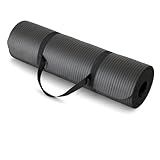
Amazon Basics 1/2 Inch Extra Thick Exercise Yoga Mat with Carrying Strap, Black
- CUSHY 1/2 THICKNESS ENSURES COMFORT FOR YOGA AND EXERCISE.
- DURABLE FOAM CONSTRUCTION FOR LONG-LASTING SUPPORT AND BOUNCE-BACK.
- CONVENIENT STRAP FOR EASY CARRYING AND STORAGE ON THE GO.


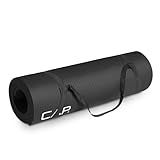
CAP Barbell High Density Exercise Mat with strap, 68"x24" 12mm (Black)
-
EXTRA THICK COMFORT: 12 MM CUSHIONING SUPPORTS YOUR BODY DURING POSES.
-
TRAVEL-FRIENDLY DESIGN: CARRY STRAP FOR EASY HANDS-FREE TRANSPORT ANYWHERE.
-
NON-SLIP PERFORMANCE: STAY STABLE AND SECURE DURING EVERY WORKOUT SESSION.



CAP Barbell Yoga Mat 1/2" Thick with Carrying Strap - High Density Exercise Mat for Yoga, Pilates, Stretching, Floor & Fitness Workouts - 68''x24''x1/2" | Wine
- EXTRA-THICK 12MM CUSHIONING FOR ULTIMATE COMFORT AND SUPPORT.
- CONVENIENT CARRY STRAP FOR HASSLE-FREE TRAVEL TO YOUR WORKOUTS.
- NON-SLIP SURFACE ENSURES STABILITY FOR ALL YOUR FAVORITE POSES.


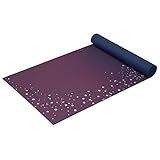
Gaiam Yoga Mat Premium Print Extra Thick Non Slip Exercise & Fitness Mat for All Types of Yoga, Pilates & Floor Workouts, Sublime Sky, 6mm
- EXTRA THICK CUSHIONING FOR JOINT SUPPORT DURING ALL WORKOUTS.
- NON-SLIP TEXTURE ENSURES SUPERIOR GRIP AND STABILITY IN PRACTICE.
- ECO-FRIENDLY, NON-TOXIC MATERIAL FOR A HEALTHIER CHOICE.


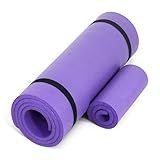
CAP Barbell Yoga Mat 1/2" Thick with Carrying Strap & Knee Pad - High Density Exercise Mat for Yoga, Pilates, Stretching, Floor & Fitness Workouts - 71''x24''x1/2" | Purple
- EXTRA-THICK 12MM PADDING FOR ULTIMATE COMFORT DURING WORKOUTS.
- CONVENIENT TRAVEL STRAP FOR EASY GYM TRANSPORT AND HANDS-FREE CARRYING.
- NON-SLIP SURFACE ENSURES STABLE PERFORMANCE IN ALL EXERCISES.


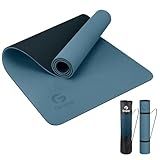
Yoga Mat Non Slip, Eco Friendly Fitness Exercise Mat with Carrying Strap,Pro Yoga Mats for Women,Workout Mats for Home, Pilates and Floor Exercises (Grey Blue/Black, Thickness-6mm)
- ECO-FRIENDLY MATERIAL: SAFER, SOFTER, AND SUSTAINABLE FOR EVERY WORKOUT.
- ANTI-SKID DESIGN: SUPERIOR GRIP AND DURABILITY FOR ALL FITNESS LEVELS.
- FREE CARRY STRAP & BAG: CONVENIENT TRANSPORT FOR YOUR YOGA MAT ANYWHERE!


A quality yoga mat is essential for a comfortable and effective practice. Whether you are a beginner or an advanced yogi, choosing the right mat can enhance your balance, support your posture, and prevent injuries. In this guide, we'll explore key factors to consider when purchasing a yoga mat.
Why a Good Yoga Mat Matters
A high-quality yoga mat provides stability, cushioning, and grip. It prevents slipping, absorbs impact, and ensures proper alignment. Investing in a good yoga mat enhances your overall experience and helps you stay committed to your practice.
Key Features to Look for in a Yoga Mat
Material
Yoga mats come in various materials, including:
-
PVC (Polyvinyl Chloride): Durable and provides a strong grip but is not eco-friendly.
-
TPE (Thermoplastic Elastomer): Lightweight, recyclable, and a good alternative to PVC.
-
Natural Rubber: Biodegradable, offers excellent traction, but may have a strong odor initially.
-
Cotton or Jute: Eco-friendly and breathable but may lack grip compared to rubber mats.
Thickness & Cushioning
-
1/16 inch (1.5mm): Ultra-thin, great for travel but offers minimal cushioning.
-
1/8 inch (3mm): Standard thickness, provides a balance of comfort and portability.
-
1/4 inch (6mm) or more: Extra cushioning, ideal for joint support but can be bulkier.
Grip & Texture
- A non-slip surface is crucial for stability in poses.
-- Some mats have textured surfaces for better grip, while others use sticky materials.
Size & Portability
-
Standard mats are 68 inches long and 24 inches wide.
-
Extra-large mats are available for taller individuals or more space during practice.
-
Foldable or lightweight mats are great for travel.
Durability & Maintenance
-
Choose a mat that resists wear and tear.
-
Mats should be easy to clean and maintain, preferably water-resistant.
How to Choose the Best Yoga Mat for Your Needs
-
For Beginners: A medium-thickness, non-slip mat provides comfort and stability.
-
For Hot Yoga Enthusiasts: Opt for a moisture-resistant mat with excellent grip.
-
For Travel: A lightweight, foldable mat is ideal.
-
For Extra Support: A thicker mat provides better cushioning for sensitive joints.
Conclusion
Finding the right yoga mat enhances your practice and supports your body. When looking for the best deals, consider factors such as material, thickness, grip, and durability. Take your time to choose a mat that aligns with your yoga goals and personal preferences.
Happy yoga practice! 🧘♀️
